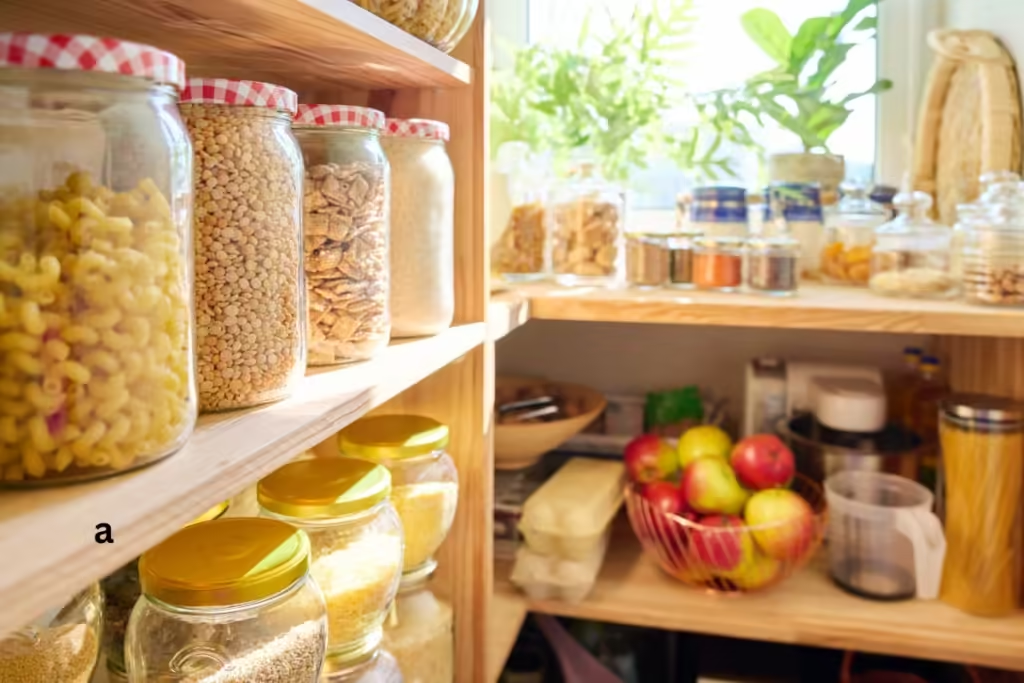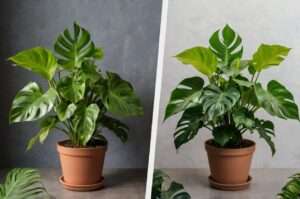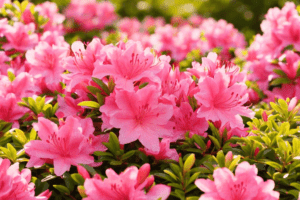15 Best Tips for Growing Thriving Arborvitae in Your Garden
Discover the versatile world of arborvitae, nature’s perfect evergreen companion. This comprehensive guide covers everything from popular varieties and planting tips to care instructions and landscaping ideas. Learn how to choose the right arborvitae for your space, troubleshoot common issues, and create stunning privacy hedges or container gardens. Embrace the beauty of these low-maintenance “trees of life” in your outdoor space.
The Ultimate Guide to Arborvitae: Your Perfect Evergreen Companion
Hello, garden enthusiasts and landscape lovers! Today, we’re diving into the wonderful world of arborvitae. These versatile evergreens are more than just pretty faces in your garden; they’re reliable, low-maintenance companions that can transform your outdoor space. Whether you’re looking for privacy, structure, or simply a touch of year-round green, arborvitae might just be your perfect match. So, grab a cup of tea, and let’s explore everything you need to know about these charming conifers!
Understanding Arborvitae: Nature’s Living Fence
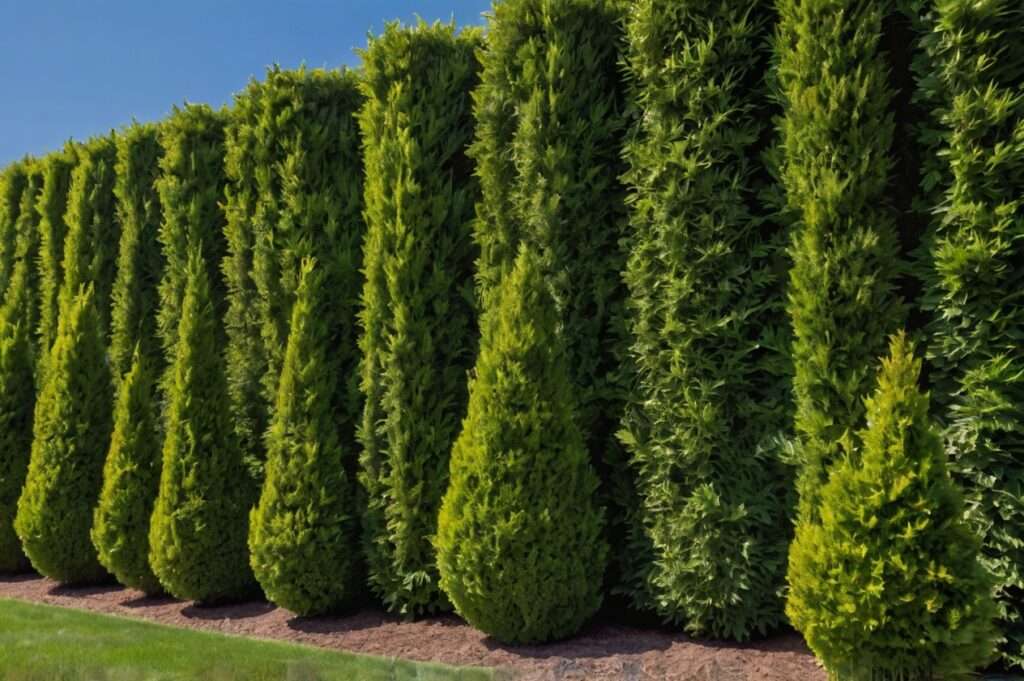
What is Arborvitae?
Arborvitae, which translates to “tree of life” in Latin, is a genus of coniferous trees belonging to the cypress family. These evergreen trees are native to North America and eastern Asia. With their dense, flat sprays of scale-like leaves, arborvitae trees create a lush, textured appearance that adds instant charm to any landscape.
Pronunciation and Common Names
First things first, let’s tackle that tricky name. Arborvitae pronunciation is “ar-bor-VYE-tee.” You might also hear these trees referred to as Thuja, their scientific name, or simply as “cedars,” though they’re not true cedars botanically speaking.
Popular Arborvitae Varieties
Now that we’re on a first-name basis with arborvitae, let’s meet some of the family:
- Emerald Green Arborvitae: A compact, columnar variety perfect for smaller spaces.
- Green Giant Arborvitae: As the name suggests, this fast-growing variety can reach impressive heights.
- American Pillar Arborvitae: Another tall, slender option great for privacy screens.
- Globe Arborvitae: A charming, rounded variety ideal for accents or low hedges.
Each variety has its own unique characteristics, so you’re sure to find one that suits your garden’s needs and your personal style.
You May Also Like To Read:
10 Amazing Swiss Cheese Plant Care Tips for Thriving Monstera Deliciosa
Growing and Caring for Your Arborvitae
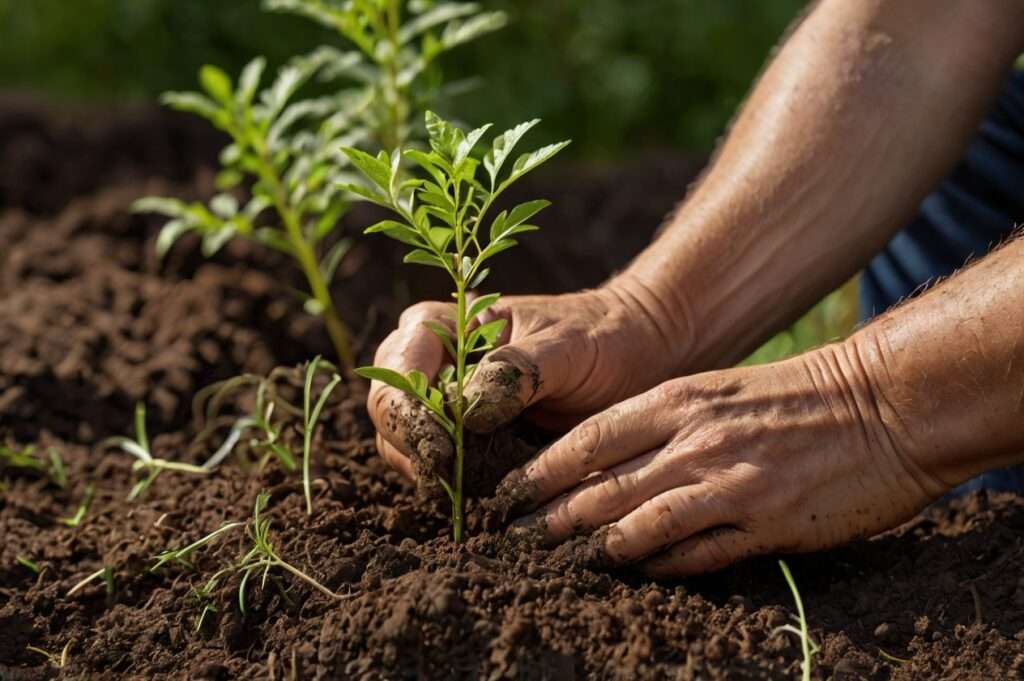
Planting Your Arborvitae
Choosing the right location is crucial for your arborvitae’s health and happiness. These trees generally prefer:
- Full sun to partial shade
- Well-draining soil
- Protection from harsh winds
When planting, dig a hole twice as wide as the root ball and just as deep. Place your tree, backfill with soil, water thoroughly, and add a layer of mulch to retain moisture.
Watering and Fertilizing
Arborvitae appreciate consistent moisture, especially during their first growing season. Water deeply once a week, or more often during dry spells. As for arborvitae fertilizer, a slow-release, balanced fertilizer applied in early spring can give your trees a boost.
Pruning and Maintenance
One of the joys of arborvitae is their naturally beautiful shape, which requires minimal pruning. However, if you need to shape your trees or control their size:
- Prune in late winter or early spring before new growth begins
- Remove dead or diseased branches as needed
- Avoid cutting into old wood, as it may not regrow
Troubleshooting Common Arborvitae Issues
![]()
Even the hardiest trees can face challenges. Here are some common issues and how to address them:
Arborvitae Turning Brown
If you notice your arborvitae turning brown, don’t panic! This could be due to:
- Winter burn: Protect trees with burlap in harsh winters
- Drought stress: Increase watering during dry periods
- Pest damage: Inspect for signs of insects and treat accordingly
Pests and Diseases
Keep an eye out for bagworms, spider mites, and scale insects. These pests can be managed with insecticidal soaps or horticultural oils. As for diseases, root rot and leaf blight can occur in overly wet conditions. Ensure good drainage and avoid overwatering to prevent these issues.
Related Article:
10 Incredible Tips for Thriving Philodendron Micans: A Beginner’s Guide
Landscaping with Arborvitae: Design Ideas and Tips
![]()
Arborvitae are incredibly versatile in the landscape. Here are some ideas to inspire you:
Creating an Arborvitae Hedge
An arborvitae hedge is a classic choice for privacy and structure in the garden. When planting for a hedge:
- Space trees 2-3 feet apart for a dense screen
- Choose a variety that suits your desired hedge height
- Consider mixing varieties for added interest
Arborvitae in Containers
Yes, you can grow arborvitae in pots! This is a great option for patios, balconies, or to flank an entryway. Just be sure to:
- Choose a dwarf variety like ‘Tiny Tim’ or ‘Little Giant’
- Use a large pot with drainage holes
- Water more frequently, as containers dry out faster than the ground
Companion Planting
Arborvitae play well with others in the garden. Consider pairing them with:
- Flowering shrubs like hydrangeas for color contrast
- Ornamental grasses for texture
- Shade-loving perennials at their base
Choosing the Right Arborvitae for Your Space
![]()
With so many varieties available, how do you choose? Consider these factors:
Arborvitae Growth Rate
The arborvitae growth rate varies by variety:
- Fast-growing: ‘Green Giant’ can grow 3-5 feet per year
- Moderate: ‘Emerald Green’ grows about 1 foot per year
- Slow: Globe varieties may only grow a few inches annually
Mature Size
Think about the mature size of your chosen variety:
- Tall varieties like ‘Green Giant’ can reach 50-60 feet
- Medium-sized options like ‘Emerald Green’ top out at 10-15 feet
- Dwarf varieties may only reach 2-4 feet tall
Climate Considerations
Most arborvitae are hardy in USDA zones 3-8, but some varieties can tolerate warmer or cooler climates. Always check the specific needs of your chosen variety.
Read Also:
15 Essential Tips for Thriving Philodendron Selloum: A Complete Care Guide
Buying and Planting Your Arborvitae

Ready to add some arborvitae to your landscape? Here’s what you need to know:
Where to Buy Arborvitae
You can find arborvitae for sale at:
- Local nurseries and garden centers
- Home improvement stores
- Online plant retailers
When choosing your trees, look for:
- Healthy, green foliage
- No signs of pests or disease
- A sturdy, well-shaped form
Best Time to Plant
The ideal time to plant arborvitae is in the spring or fall when temperatures are mild and rainfall is more frequent. This gives the trees time to establish their root systems before facing summer heat or winter cold.
Arborvitae Alternatives
![]()
While arborvitae are wonderful, they might not be the perfect fit for every garden. If you’re looking for alternatives, consider:
- Leyland Cypress: Fast-growing and great for privacy
- Juniper: Drought-tolerant and available in many shapes and sizes
- Yew: Shade-tolerant and deer-resistant
Frequently Asked Questions About Arborvitae
Let’s address some common questions about these fantastic trees:
- 1. Are arborvitae deer resistant?While no plant is completely deer-proof, arborvitae are generally not a favorite food for deer. However, in areas with high deer populations, young arborvitae may still be at risk. In such cases, consider using deer repellents or protective barriers to safeguard your trees.2. How far apart should I plant arborvitae?For a hedge, space arborvitae 2-3 feet apart to create a dense screen. For individual specimen trees, space them according to their mature width: typically 3-5 feet apart for smaller varieties and 6-10 feet apart for larger varieties. This spacing allows each tree to grow to its full potential without overcrowding.
3. Can arborvitae grow in shade?
Arborvitae prefer full sun for optimal growth, but they can tolerate partial shade. In shadier conditions, they may grow less densely and be more susceptible to diseases. To ensure the best health and appearance, aim for a location with ample sunlight.
4. How long do arborvitae live?
With proper care, arborvitae can live for 50-100 years or more. Their longevity makes them a great investment for long-term landscaping, providing enduring beauty and functionality in your garden.
5. Are arborvitae roots invasive?
Arborvitae have relatively shallow and non-invasive root systems. They are not considered invasive. However, their roots can extend about 1.5 times the width of the canopy. While they generally don’t cause problems, ensure they have enough space to grow without interfering with other plants or structures.
6. What should I do if my arborvitae is turning brown?
If your arborvitae is turning brown, possible causes include:
- Winter Burn: Protect the trees with burlap or other windbreaks in harsh winter conditions.
- Drought Stress: Increase watering during dry spells and ensure the soil remains consistently moist.
- Pest Damage: Check for signs of insects such as bagworms or spider mites and treat with appropriate insecticides.
- Disease: Inspect for symptoms of diseases like root rot or leaf blight. Improve drainage and avoid overwatering to prevent these issues.
7. How do I prune arborvitae?
Pruning arborvitae should be done in late winter or early spring before new growth starts. Remove any dead or diseased branches and shape the tree as needed. Avoid cutting into old wood, as it may not regenerate. Regular light pruning helps maintain the tree’s natural shape and health.
8. Can I grow arborvitae in a container?
Yes, you can grow arborvitae in containers, which is ideal for patios or small spaces. Choose a dwarf variety like ‘Tiny Tim’ or ‘Little Giant,’ use a large pot with good drainage, and water more frequently, as containers tend to dry out faster than garden soil.
9. What are some good companion plants for arborvitae?
Arborvitae pair well with a variety of plants. Consider:
- Flowering Shrubs: Hydrangeas or roses for color contrast.
- Ornamental Grasses: Such as feather reed grass for added texture.
- Shade-Loving Perennials: Like hostas or astilbes at the base of the trees.
10. When is the best time to plant arborvitae?
The best time to plant arborvitae is in the spring or fall when temperatures are mild and rainfall is more frequent. This timing allows the trees to establish their roots before facing the stresses of summer heat or winter cold.
11. How do I choose the right variety of arborvitae for my space?
Consider the following factors:
- Growth Rate: Fast-growing varieties like ‘Green Giant’ vs. slower ones like Globe varieties.
- Mature Size: Ensure the tree’s mature height and width fit your space.
- Climate: Choose a variety suited to your USDA hardiness zone for optimal growth.
12. What are some alternatives to arborvitae?
If arborvitae aren’t the right fit, consider:
- Leyland Cypress: Fast-growing and good for privacy.
- Juniper: Drought-tolerant with various shapes and sizes.
- Yew: Shade-tolerant and deer-resistant.
These alternatives can offer similar benefits, depending on your landscaping needs.
Conclusion: Embracing the Beauty of Arborvitae
From their graceful forms to their year-round greenery, arborvitae offer so much to our gardens and landscapes. Whether you’re creating a living privacy fence, adding structure to your garden design, or simply want a low-maintenance evergreen presence, arborvitae are up to the task.
Remember, the key to success with these wonderful trees lies in choosing the right variety for your space and needs, providing proper care, and being patient as they grow into their full potential. With a little love and attention, your arborvitae will reward you with years of beauty and enjoyment.
So, why not give arborvitae a try? These “trees of life” might just breathe new life into your outdoor space. Happy gardening, and may your arborvitae thrive!
References
- Missouri Botanical Garden (www.missouribotanicalgarden.org)
- Provides detailed plant profiles, including those for arborvitae, with information on care, varieties, and common issues.
- University of Illinois Extension (web.extension.illinois.edu)
- Offers research-based information on a variety of plants, including arborvitae, with practical gardening advice.
- North Carolina State University Extension (www.ces.ncsu.edu)
- Features extensive resources on horticulture and plant care, including guides on arborvitae and similar plants.
- The Old Farmer’s Almanac (www.almanac.com)
- Includes articles and tips on planting and caring for arborvitae, along with general gardening advice.
- American Conifer Society (www.conifersociety.org)
- A specialized organization providing in-depth information on conifers, including arborvitae, with resources on care, varieties, and pest management.

